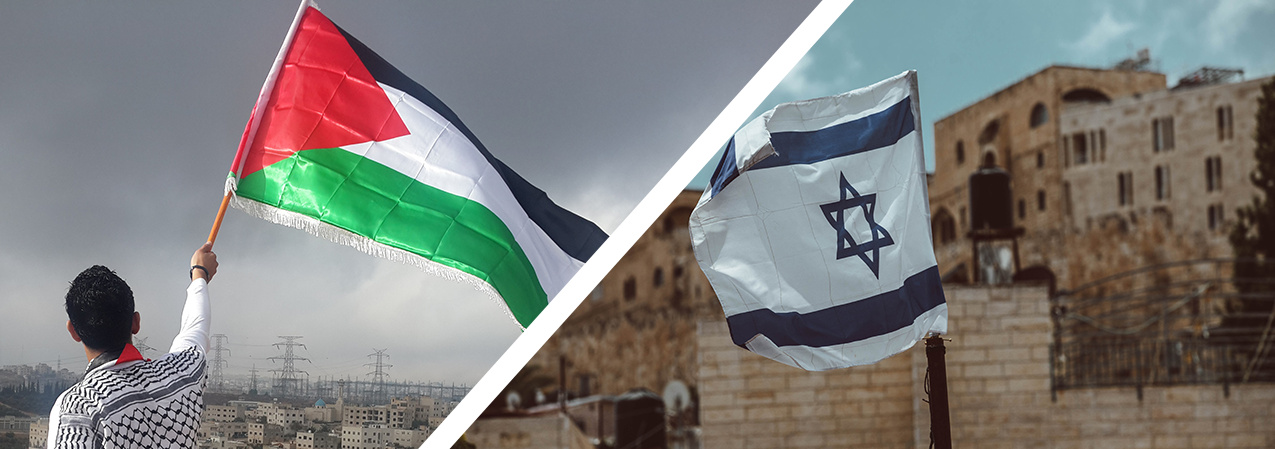CONTENT LEVEL:
Ages 14-18 (Grades 9-12)
The situation in Israel and Palestine continues to dominate the news and is the topic of fraught conversations around the world. The history of this region and the associated conflict stretches millenia, making it difficult to understand the nuances, complexities, and deeply held beliefs on both sides. The understandably strong emotions felt by Israelis, Palestinians, and more generally, by Jewish and Arab and Muslim communities around the world add heat to an already combustive situation.
We at Woven Teaching, like so many millions around the world, have been deeply distressed by the news coming out of Israel and Palestine. The October 7 terrorist attack by Hamas on Israeli civilians was the deadliest attack on Jews since the Holocaust–1,400 people were killed and over 4,000 were wounded, in addition to nearly 200 people taken hostage by Hamas militants. For most Israelis, this was a horrific act of terrorism and a provocation by Hamas. For many Palestinians, these attacks were viewed as a justified response to decades of Israeli subjugation and occupation.
The ensuing siege on Gaza by Israel has killed thousands of Palestinians––more than 4,100 and at least 12,000 wounded at the time of writing––worsening an already extreme humanitarian crisis in the territory. The murder of civilians and the blocking of food, water, electricity, and fuel from entering Gaza continue to have very serious and deadly consequences.
The escalating emotions surrounding this conflict have created fertile ground for both antisemitism and anti-Muslim sentiment. The leadership in Israel and in Gaza continue to amplify the hate by their use of incendiary and demeaning language. The Israeli administration continues to use degrading and dehumanizing language to speak about Palestinians. Comparing humans to animals has long been a tactic used to dehumanize people seen as enemies or as “other”; referring to one’s enemies as less than human strips people of their humanity and allows and even encourages acts of hate and violence. Hamas’ continued vilification of all Jewish people is horrible and unacceptable––dehumanizing language from either side of the conflict fans the flames of hate and leaves both Muslim and Jewish communities in danger. In the United States, we are already seeing a drastic increase in anti-Jewish and anti-Muslim incidents and crimes, including the murder of a Palestinian-American child in Illinois.
Over the past two weeks, we have seen myriad violations of international human rights treaties and international humanitarian law. At present, the situation continues to worsen by the hour. We do not assume to have all the answers to challenging questions, but do hope to offer some useful resources and guidelines for educators who want to have candid discussions with their students about this fraught and divisive topic.
